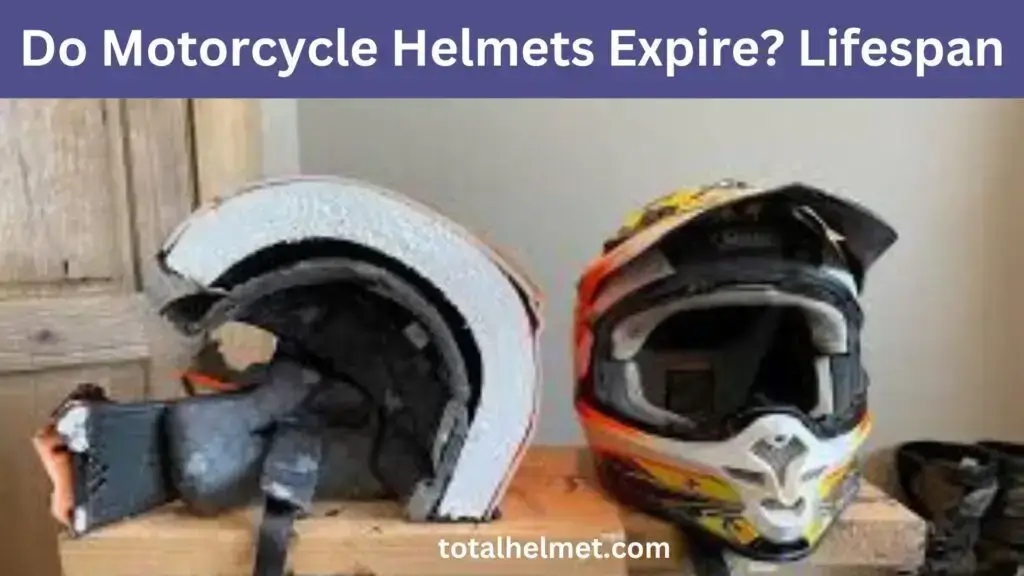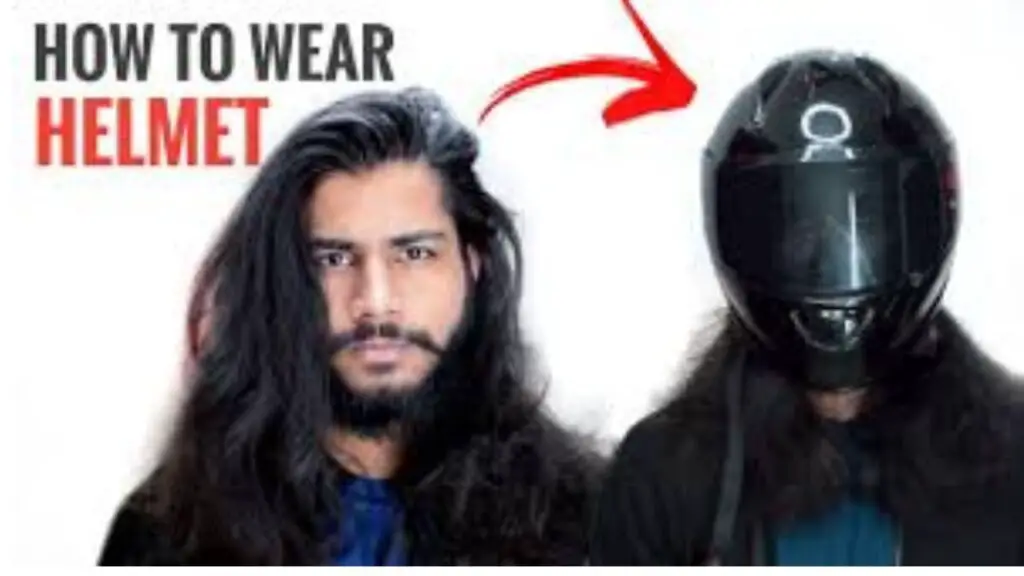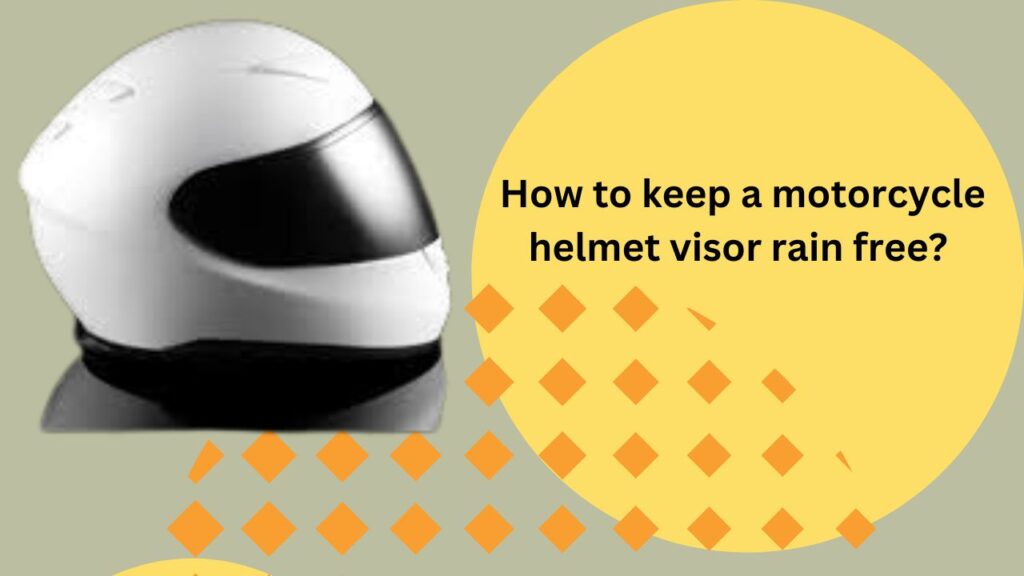Yes, motorcycle helmets do have an expiration date, and it’s crucial to check it regularly. Think of helmets like perishable goods—they degrade over time. The lifespan mainly depends on the materials used. Helmets made from polycarbonate, fiberglass composite, or carbon fiber tend to last longer than those made from cheaper materials like thermoplastics.
Motorcycle helmets, like other safety gear, have a recommended lifespan. Experts suggest replacing helmets every 5 years from the date of manufacture, especially for frequent riders. Over time, materials like glue and resins degrade, reducing the helmet’s ability to protect you.
Understanding Helmet Composition and Degradation
Knowing the materials and structure of your helmet is key to understanding its lifespan. Helmets have several important components, each of which can degrade over time.
Key Components
- Outer Shell: Made from materials like fiberglass, carbon fiber, and Kevlar, it can suffer from UV damage, leading to cracks or color fading. Regular checks can help maintain its strength.
- Interior Padding: Foam padding provides comfort and absorbs shock. Over time, sweat and hair oils degrade it, reducing its effectiveness.
- Visor: Typically made of polycarbonate, the visor can become scratched or cloudy, which reduces visibility. Regular cleaning and replacement when needed are essential.
To ensure your helmet stays effective, maintain and inspect these components regularly.
Lifespan by Material
- Thermoplastic/Polycarbonate: Around 5 years.
- Other Materials (Fiberglass, Carbon Fiber): Up to 9 years with proper care.
Wear and tear, as well as environmental factors, affect a helmet’s durability. Helmets absorb impacts during accidents, and exposure to heat, sweat, and time can break down the internal foam, reducing its ability to protect your head. If a helmet has been involved in a crash or has visible damage, it’s essential to replace it.
Factors That Cause Helmet Degradation
- Accidents: Helmets are designed to absorb impact, so any damage compromises their safety.
- Exposure: Prolonged exposure to heat, UV rays, or moisture can weaken the materials.
- Wear and Tear: Over time, the interior foam and padding degrade, making the helmet less effective.
- Weekend Riders: If used infrequently, helmets may last closer to 7 years.
Check the sticker inside the helmet for its manufacture date, and regularly inspect the foam and outer shell for signs of degradation. For helmets made from thermoplastic or polycarbonate, the lifespan is usually 5 years, but with careful maintenance, some can last up to 9 years. Look for deep scratches, interior foam that doesn’t bounce back, or worn padding—these are all signs that it’s time to replace your helmet.

How To Maintain a Motorcycle Helmet?
Proper maintenance extends your helmet’s life and keeps it functioning safely. Follow these steps:
- Clean Gently: Use mild soap and water. Avoid harsh chemicals that could damage the shell or liner.
- Inspect for Damage: Before each ride, check for cracks, dents, or scratches. If found, replace the helmet.
- Store Properly: Keep it in a cool, dry place away from sunlight to prevent material degradation.
- Handle with Care: Never drop or treat your helmet roughly, as the internal structure may weaken.
- Replace Worn Padding: Worn padding affects comfort and safety. Replace it when necessary.
- Use a Helmet Bag: Store your helmet in a dedicated helmet bag to protect it from scratches or damage.
- Avoid Stickers: Stickers may weaken the helmet shell, so it’s best to leave your helmet sticker-free.
- Clean with Water Only: Use water and a cloth to clean the helmet and visor. Avoid strong cleaners.
- Avoid Furniture Polish: Using polish on the visor can blur your vision. Use helmet-specific cleaners instead.
- Store Gloves Separately: Oils from your gloves can degrade the padding, so store them separately.
- Replace Every Five Years: Helmets degrade over time, even if unused. Replace every five years or sooner if you ride frequently.
- Check for Cracks: Regularly inspect your helmet. Any cracks mean it’s time for a new one.
- Don’t Loan Your Helmet: Helmets fit differently for each person, and lending them out may compromise their safety.
- Replace Worn Padding: If the padding shows signs of wear, replace it immediately to ensure ongoing protection.
When to Replace Your Motorcycle Helmet?
Chin Strap Condition
Your chin strap keeps the helmet secure, but it can loosen or wear down over time. As the material ages, it might fray or come apart, affecting its lock and safety. This is a warning sign to check if it’s fitting comfortably on your head or if it feels loose while riding. Inspecting your helmet regularly, especially if it’s older than five years, can reveal signs of wear.
Ensuring a proper fit makes all the difference for safety in an accident. If any part of the strap shows loosening, replace it right away—or invest in a new helmet if needed. Regular maintenance keeps the helmet effective for longer.
Interior Padding
The inner padding or comfort liner cushions your head from the hard interior, but it wears out with excess sweat and moisture, which weakens the glue holding the pads and cheek pads. If your helmet has cheaper foam inserts, they may fall apart in a few months. When using Bluetooth motorcycle speakers, make sure they stay clipped without sliding off during rides.
Missing pads can make riding uncomfortable and even painful if an accident happens. Replacing the worn foam at a helmet manufacturer or bike shop can extend the helmet’s life if you’re not ready to fully replace it.
Shell Condition and Durability
The outer shell is essential for your helmet’s durability, often made from fiberglass, carbon fiber, Kevlar, ABS, or polycarbonate. UV sunlight exposure over long periods can degrade these materials, despite stabilizers added by manufacturers.
Frequent sun exposure weakens the exterior. Regularly look over your helmet for faded colors or yellowing, as these show the sun may have affected the shell. Also, watch for cracks, fractures, or any structural problems, which means it’s time for a replacement to maintain safety.
Reasons to Replace Your Helmet
- Your helmet is over 5 years old.
- It has been involved in an accident.
- There are visible cracks or signs of wear.
- The fit has changed or it has been exposed to extreme conditions.
Always follow the manufacturer’s guidelines for helmet replacement.
Choosing the Right Replacement Helmet
- Understand the Purpose: Know why you need a new helmet (expiration or accident).
- Check Safety Standards: Ensure the helmet meets DOT safety standards and has FMVSS No. 218 certification.
- Prioritize Comfort: Look for helmets with adjustable cheek pads and straps for a better fit.
- Consider Advanced Features: Opt for helmets with features like modular design or Bluetooth headset compatibility.
- Research Options: Explore different brands and models to find one that meets your needs. Look for the best brand that suits your riding style and is known for making a safe helmet.
- Test Before Buying: Try on helmets to ensure they fit well and feel comfortable. Always check your head size for the best fit.
- Invest Wisely: A good helmet is essential for safety; don’t compromise on quality. Avoid the worst brands that are known for poor safety ratings.
Can I Repair a Damaged Motorcycle Helmet?
It’s not recommended to repair a damaged motorcycle helmet. Even small cracks or dents can compromise its protection. Always replace a damaged helmet, rather than attempting DIY repairs. Some manufacturers may offer repair services for minor issues, but safety comes first—it’s better to invest in a new helmet.
Conclusion
Motorcycle helmets act as your protective shield on the road. Though they don’t have an exact expiration date, it’s recommended to replace them every 5 to 7 years, even if they appear to be in good condition. Over time, the materials inside degrade, reducing their ability to keep you safe. Regularly inspect and maintain your helmet, and always follow the manufacturer’s advice. For top-notch protection and smart features, consider investing in a high-quality helmet like the LIVALL MC1 Pro—making your rides safer and more enjoyable.
FAQs
How many years does a motorcycle helmet last?
A motorcycle helmet typically lasts around five years before it needs to be replaced.
Can you wear motorcycle helmets for 10 years?
While it’s possible to wear a motorcycle helmet for up to 10 years, it’s generally not recommended. Most experts advise replacing helmets every five years due to material degradation and potential loss of effectiveness. Wearing a helmet beyond its recommended lifespan may compromise safety.
Do Motorcycle Helmets Expire If They Are Not Used?
Motorcycle helmets don’t have a specific expiration date if they’re not used. However, their effectiveness can still degrade over time due to factors like exposure to sunlight, temperature fluctuations, and general wear and tear.
How Long Does An Unused Helmet Last?
An unused helmet can last for several years if stored properly in a cool, dry place away from direct sunlight and extreme temperatures
Do you have any recommendations for new motorcycle helmets?
For new motorcycle helmets, I recommend looking for options that are DOT or ECE-certified for safety. Ensure a comfortable fit, choose the helmet type that suits your riding style, and prioritize features like anti-fog visors and adequate ventilation. Set a budget that balances quality.
How about an old helmet that hasn’t been worn?
Even if an old helmet hasn’t been worn, it can still degrade over time due to factors like exposure to sunlight, temperature fluctuations, and material breakdown. It’s recommended to replace helmets every five years to ensure optimal safety, regardless of use.
Does anybody offer a service to inspect a helmet?
Yes, there are services available to inspect motorcycle helmets. Many motorcycle shops and helmet retailers offer inspection services to ensure your helmet is in good condition and meets safety standards. Additionally, some organizations or safety associations may provide helmet inspection services as part of their initiatives to promote motorcycle safety.
So where do we get to decide when to get a new motorcycle helmet?
Deciding when to get a new motorcycle helmet depends on factors like its age, visible wear and tear, proper fit, exposure to elements, and adherence to manufacturer recommendations. Regular inspection and evaluation of these factors can help determine when it’s time for a replacement.
Can I Recycle My Old Motorcycle Helmet?
Recycling your helmet depends on the materials used. Some parts are recyclable but check with your local recycling center or the manufacturer for guidance.
About the Author
I am Daniel Ken, an experienced motorcycle rider with 8 years on the road, and I specialize in writing about motorcycle helmets. I share expert insights on helmet safety, comfort, and style, helping fellow riders choose the best gear. My knowledge covers top safety standards, helmet types, premium materials, and advanced ventilation and noise reduction features.

